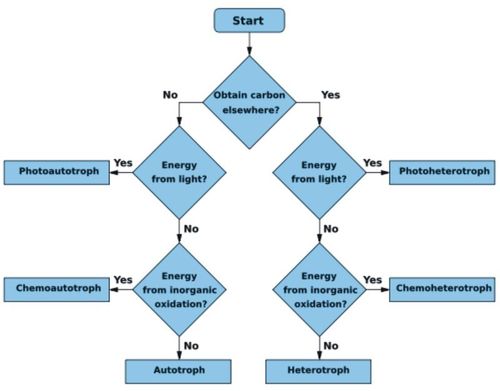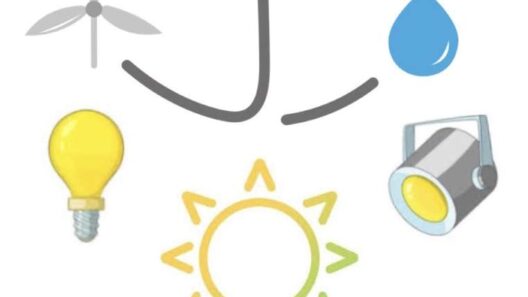Prokaryotic cells, the minute architects of life, represent a remarkable evolutionary leap into the realm of energy efficiency. These unicellular entities have thrived for billions of years, sculpting ecosystems and influencing planetary biogeochemical cycles. In this exploration, we delve into the ingenious strategies employed by prokaryotes to conserve energy—a narrative that illustrates nature’s elegant frugality.
At their core, prokaryotic cells embody simplicity. Unlike their eukaryotic counterparts, these cells lack a nucleus and membrane-bound organelles, resembling a versatile toolbox filled with multifaceted instruments. Their uncomplicated structure allows them to maintain a low energy overhead while facilitating diverse metabolic pathways. This minimalist approach serves as a testament to the adage, “less is more,” where efficiency reigns supreme.
One of the most captivating aspects of prokaryotic cells is their ability to harness energy from various sources. These organisms can extract energy from sunlight, organic compounds, and inorganic substances, painting a vibrant picture of metabolic diversity. Phototrophic prokaryotes, for instance, utilize light through the process of photosynthesis, converting solar energy into chemical energy. They possess photosynthetic pigments, such as chlorophyll, which transform photons into boons of energy. This cellular alchemy not only sustains the cell but also supports entire ecosystems, firmly rooting prokaryotes as foundational players in the web of life.
In contrast, chemotrophic prokaryotes exploit the energy released from chemical reactions. These organisms thrive in environments where sunlight is scarce, metabolizing compounds like hydrogen sulfide or ammonia. Extremophiles, a subgroup of chemotrophic prokaryotes, epitomize this skill. Living in extreme conditions—whether boiling hot springs or acidic lakes—they epitomize resilience. By tapping into the stable energy reservoirs within their habitats, they minimize their reliance on more variable energy sources. Herein lies another lesson: adaptability is synonymous with survival.
Energy conservation in prokaryotic cells extends beyond their nutritional versatility. The concept of energy currency, predominantly embodied by adenosine triphosphate (ATP), plays a pivotal role in cellular operations. Prokaryotes ingeniously produce ATP through cellular respiration. Aerobic organisms utilize oxygen to oxidize substrates, while anaerobic organisms utilize alternative electron acceptors, yielding energy even in the most inhospitable environments. This dual capability signifies that life can flourish across a spectrum of ecological niches, pivoting on the notion of energy resilience.
Furthermore, prokaryotes exhibit remarkable regulatory mechanisms that optimize energy usage. The lac operon, a cluster of genes found in Escherichia coli, offers insight into this sophistication. When lactose is present, these cells activate genes to metabolize it for energy. In the absence of lactose, the operon remains dormant, conserving resources. This dynamic and responsive regulation denotes a strategic conservancy that is emblematic of prokaryotic efficiency.
The conservation of energy is also evident in the realm of symbiosis. Many prokaryotes are not solitary but engage in symbiotic relationships, whereby they share resources with larger organisms. For example, nitrogen-fixing bacteria colonize the roots of leguminous plants, converting atmospheric nitrogen into a bioavailable form. In return, the plants supply carbohydrates to their bacterial partners. This mutualistic exchange exemplifies how resource sharing allows for energy conservation on both sides, highlighting an intricate dance of dependency that quirks nature’s design.
Moreover, biofilms present another compelling strategy employed by prokaryotic communities for energy conservation. These sticky conglomerates of cells adhere to surfaces, forming structured communities. Within biofilms, prokaryotes exhibit cooperative behavior, sharing metabolic by-products and facilitating nutrient exchange. This intercellular communication allows for enhanced nutrient acquisition and collective defense against environmental threats, creating an energy-efficient stronghold against adversity. The biofilm epitomizes the adage that unity is strength; here, energy is preserved and optimized through collaboration.
The ability of prokaryotic cells to thrive in varied environments underscores their remarkable adaptability. From the frigid depths of the ocean to the scorching sands of deserts, these organisms have evolved to optimize their energy use while minimizing waste. Their metabolic pathways are finely tuned, striking a balance between survival and sustainability. Case in point: the metabolic flexibility of prokaryotes is not simply survival; it is a blueprint for resilience in the face of changing climatic conditions.
Moreover, prokaryotic cells are at the forefront of bioremediation efforts. By utilizing contaminants as energy sources, certain prokaryotes are capable of converting toxic waste into less harmful substances. This inherent ability not only demonstrates their ecological importance but also positions them as allies in the fight against pollution. Their natural propensity for energy conservation translates into effective strategies for ecological restoration.
In the grand tapestry of life, prokaryotic cells emerge as unsung heroes—taking on the mantle of energy conservation with remarkable finesse. Their survival strategies, rooted in simplicity and cooperation, serve as profound metaphors for humanity’s own energy challenges. As we confront the pressing issue of climate change, the lessons gleaned from prokaryotes speak to an urgent need for sustainable practices. From optimizing resource use to embracing cooperation, we stand to learn a great deal from the very architects of our planet’s ecosystems.
In summary, prokaryotic cells epitomize life’s simplest energy hacks through their versatile metabolism, regulatory mechanisms, symbiotic relationships, and community structures. They thrive in diverse environments using minimal energy, underscoring a vital ecological interconnectedness. As humanity navigates the complexities of sustainability, these microscopic architects beckon us to adopt a paradigm shift in our energy paradigms, one that honors the art of conservation and the intricate threads of life.





